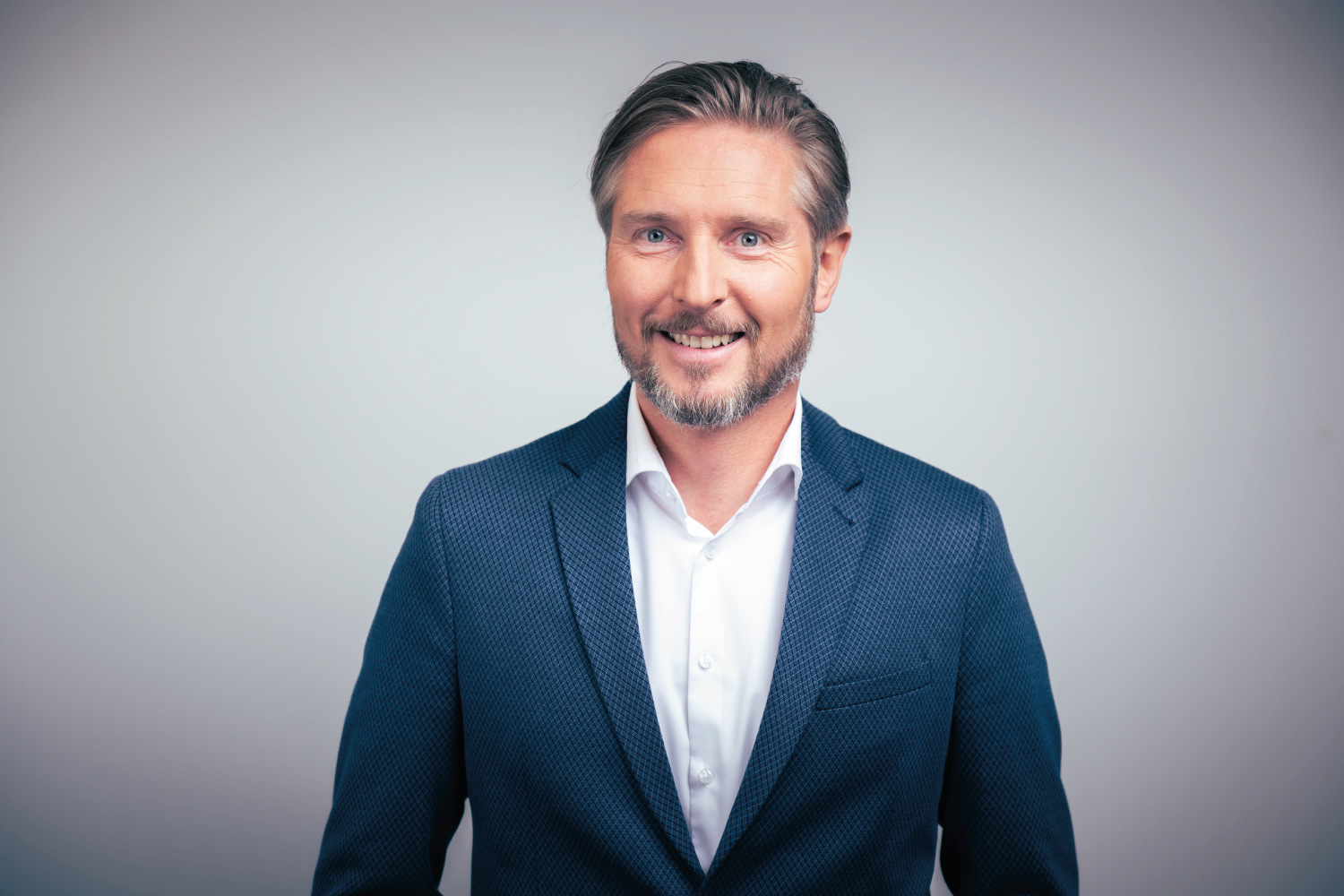Construction of a groundwater treatment facility at a former multi-disposal landfill in Grenzach-Wyhlen, Germany
DAS Environmental Expert GmbH treatment plant is ensuring the production of clean groundwater that can be safely discharged into the Rhine as part of a comprehensive site rehabilitation in Grenzach-Wyhlen, a municipality in Baden-Württemberg, Germany.
Clean groundwater thanks to a purification plant from DAS Environmental Expert GmbH
The ‘Kesslergrube’, located right on the bank of the Rhine, was once a multi-disposal landfill used by industrial companies, waste collection services and communities to dispose of municipal waste, excavation material, rubble and industrial and commercial waste. Local company Roche was among a number of chemical companies to use it to dispose of waste from its production, predominantly solid, non-combustible residue, such as filter aids, metal salts, rubble, ashes, slag and filtration residue.
Currently, the western part of this former landfill (perimeters 1 & 3 north-west) is being rehabilitated. Roche Pharma AG is having potentially contaminated material fully excavated using a dust-tight and soundproof enclosure. The excavation material is thermally treated elsewhere and the pit is then refilled with clean, uncontaminated soil.
Environmental experts pool their skills
Press film Roche ©
YouTube is a service of YouTube LLC, a subsidiary of Google Inc, USA. You can find more information on data processing through this in our privacy policy. If you would like to watch this video, you also consent — revocable at any time — to the transfer of your data to the USA and the associated data processing in accordance with Art. 49 (1) a) DSGVO.
Preliminary studies: a prerequisite for optimal groundwater treatment
Thanks to preliminary studies, DAS Environmental Expert GmbH was able, in the months from March to September 2014, to determine the best plant configuration for treating the polluted groundwater. “In these kinds of environments, we are mainly dealing with contamination from organic compounds, ammonium and halogenated hydrocarbons,” noted Dr André Lunow, the DAS project leader. “Thanks to our tested processes, the plant can be installed in the most effective way possible and be available as soon as it is commissioned.” Bauer itself built a separate hall on a jetty on the Rhine for the subsequent construction of the plant. The groundwater treatment plant started operating at the end of 2017. It is composed of the main assemblies for pretreatment/sedimentation, sand filtration, biological wastewater treatment, clarification and activated carbon filtration, as well as a clean water tank to gather the purified water prior to release into the Rhine.
Perfectly coordinated treatment process
In order to remove any sand or light particles, such as oil or fuel, that may have been transported with the water from the pumping field, a dirt and coalescence separator is built in as a pre-chamber in the inflow of the precipitation tank. The contaminated water is then pretreated in the sedimentation stage, using precipitation and flocculation. In particular, this removes inorganic turbid materials from the water.
Solid materials are then separated in a baffle plate thickener: The wastewater flows through an inclined plate settler which gathers the sludge flocs; when these reach a given layer thickness, they slide into the sludge funnel. This funnel is equipped with a slow-moving rabble rake that directs sedimented liquid sludge towards the discharge valve. This also prevents a layer of sludge from forming on the funnel wall. The sludge is then thickened and drained through a screw press.
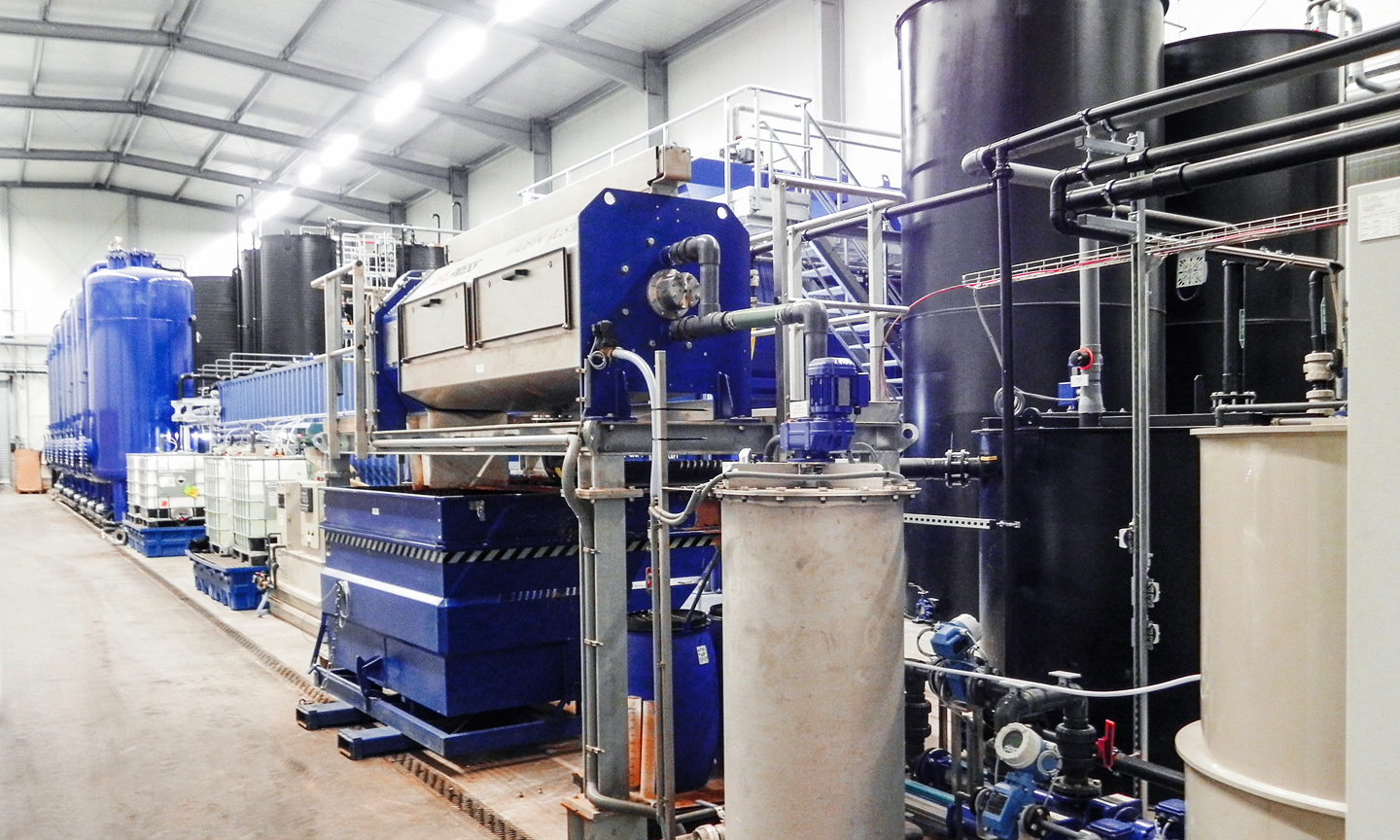
Microorganisms on fillers for biological water treatments
Subsequently, the water passes through multilayer sand filtration and then flows through one of four COD bioreactors, each with a volume of 23.5 cubic metres, in order to remove biodegradable organic substances. In this facility, DAS Environmental Expert GmbH is relying on a Moving Bed Bioreactor (MBBR), in which biofilms form on the surface of fillers. Unlike in the activated sludge process, here, specialised microorganisms, too, can be established in the biofilms fixed on the carriers, whereas their long generation times prevent them from being retained in sufficient population density in activated sludge. The stability of the cleaning process is therefore generally higher than for activated sludge plants, and pollutants are more efficiently captured.
Multistep clarification process on the way to pure water
The flow from each COD reactor arrives into a downstream nitrification reactor, with a volume of 88 cubic metres per reactor. Here, nitrite is used to oxidise the ammonium into nitrate. This nitrification also takes place in an MBBR with immobilised biomass (carrier technology). For perfect plant operation, the flow from the COD reactors is then combined with the flow from the nitrification reactors in upstream “standpipes” and fed to the booster pump stations.
Each of the four booster pump stations has a constant circulation rate of 37 cubic metres per hour, which is significantly higher than the nominal inflow of 18 cubic metres per hour. This enables the inflow volumes to be mixed directly with the tank volumes. To supply the oxygen required by the microorganisms established on the carriers, two blowers convey air through a stainless steel pipe to the ejectors installed in the four MBBRs. This also contributes to a better mixing of the tank contents.
For the secondary clarification stage, the purified groundwater is then fed again through multilayer sand filtration before arriving in the pure water tank. This serves as a collecting container before the now clean water is once again sent through a measuring section as a final control and then flows through the outlet into the Rhine.
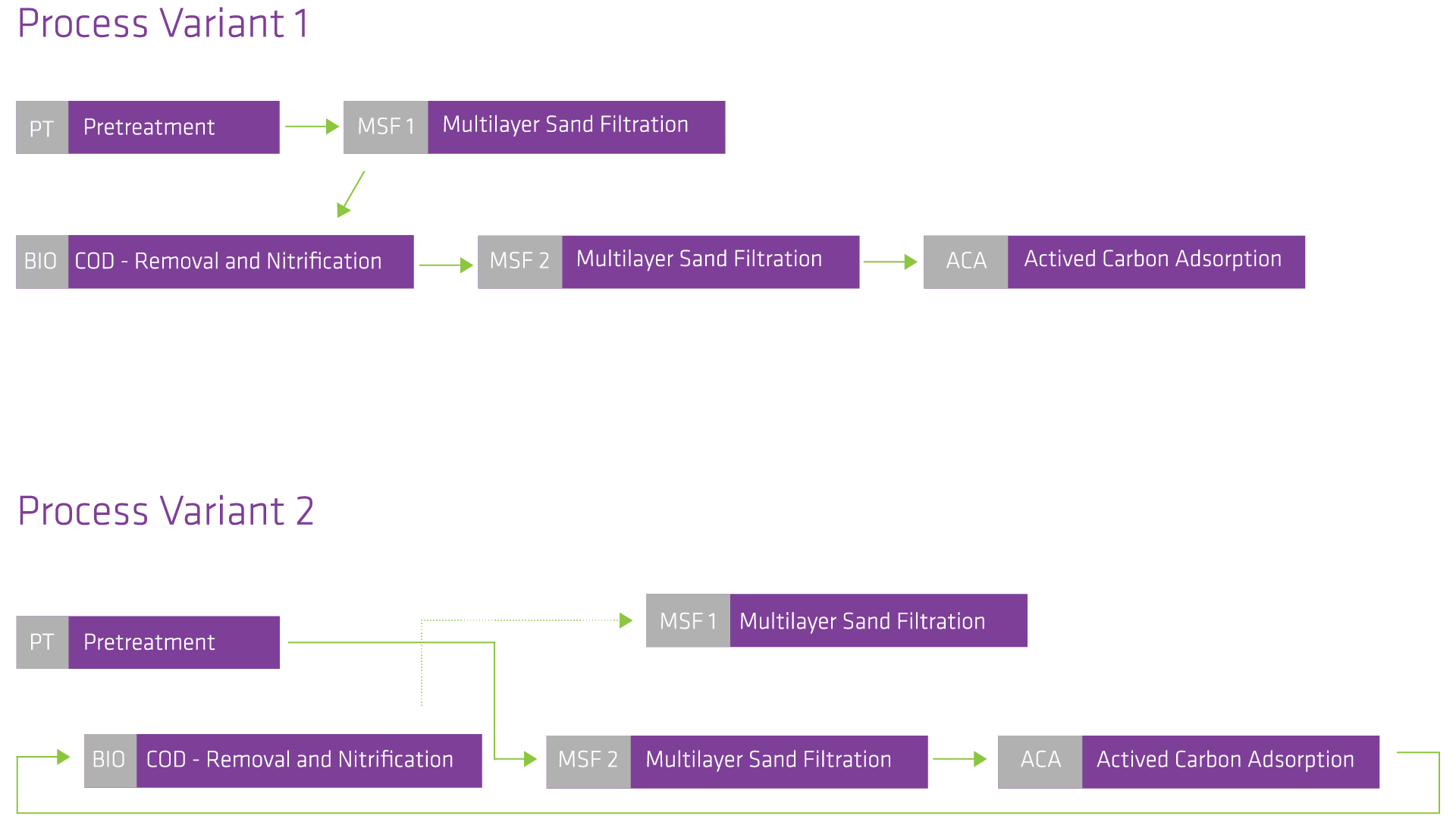
Activated carbon filters protect microorganisms in the bioreactors from biocides
In addition, an activated carbon filter is integrated in the plant to react flexibly, according to the amount of contaminants, to the fluctuating pollution levels in the groundwater pumped from the rehabilitation field. “The variable pollution levels are why we chose this plant technology”, explained Mr Lunow. “The water treatment plant can be operated according to two different process concepts using the same plant technology. The key each time is changing the process sequence. This enables us to ensure a high degree of safety, in particular for biological treatment.”
On the one hand, the plant configuration enables an upstream connection of the activated carbon filtration to protect the biological life in the event of biocide compounds in the water. If, on the other hand, there are non-biodegradable pollutants, final cleaning using activated filtration can be performed after the biological treatment. In either case, the treated groundwater will be of sufficiently good quality to permit direct discharge into the Rhine.
The solution offered by DAS Environmental Expert GmbH for groundwater treatment as part of the rehabilitation of the Kesslergrube landfill is a four-way plant with an initial stage and a final stage. With a throughput of 18 cubic metres per hour and way, the total throughput is 72 cubic metres per hour.
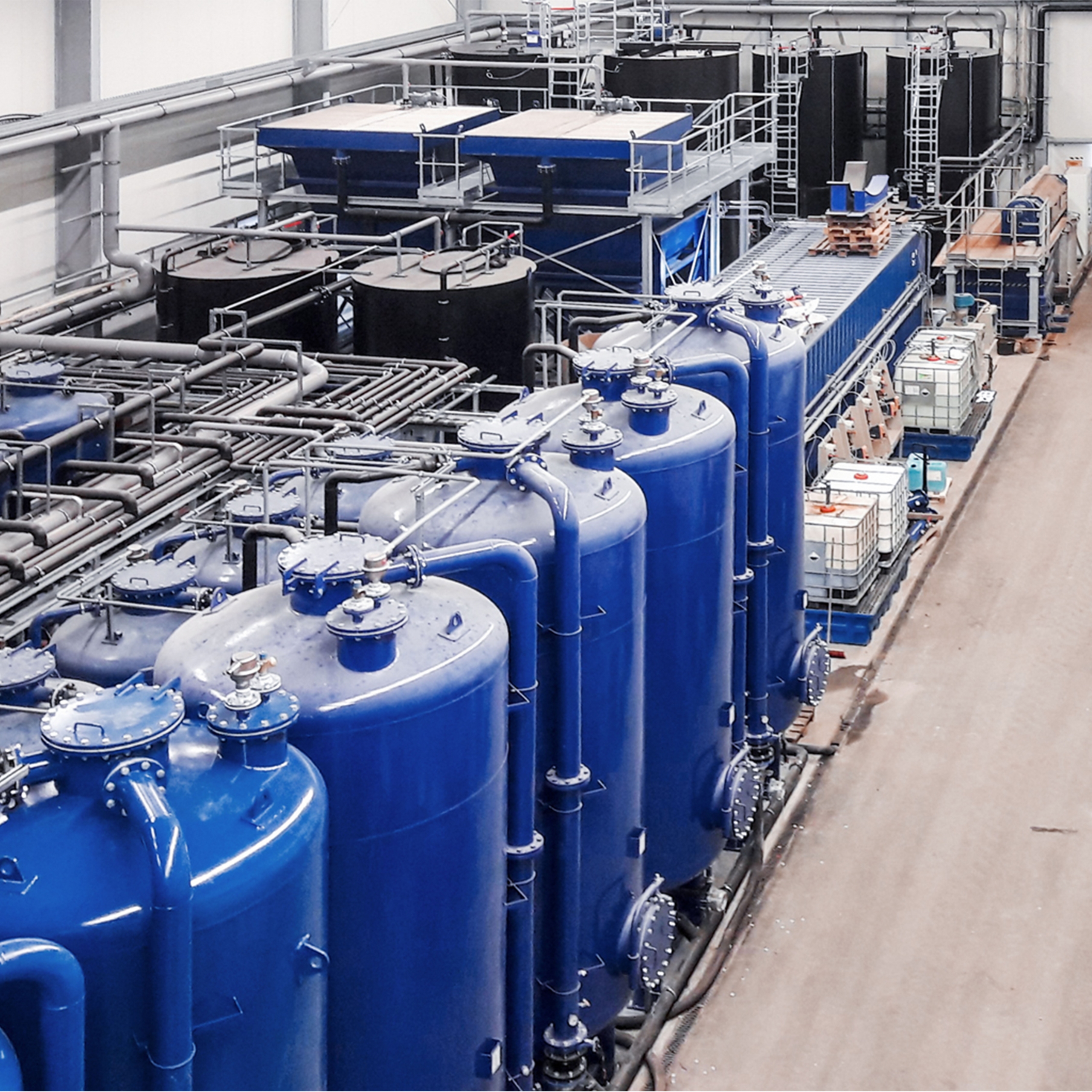
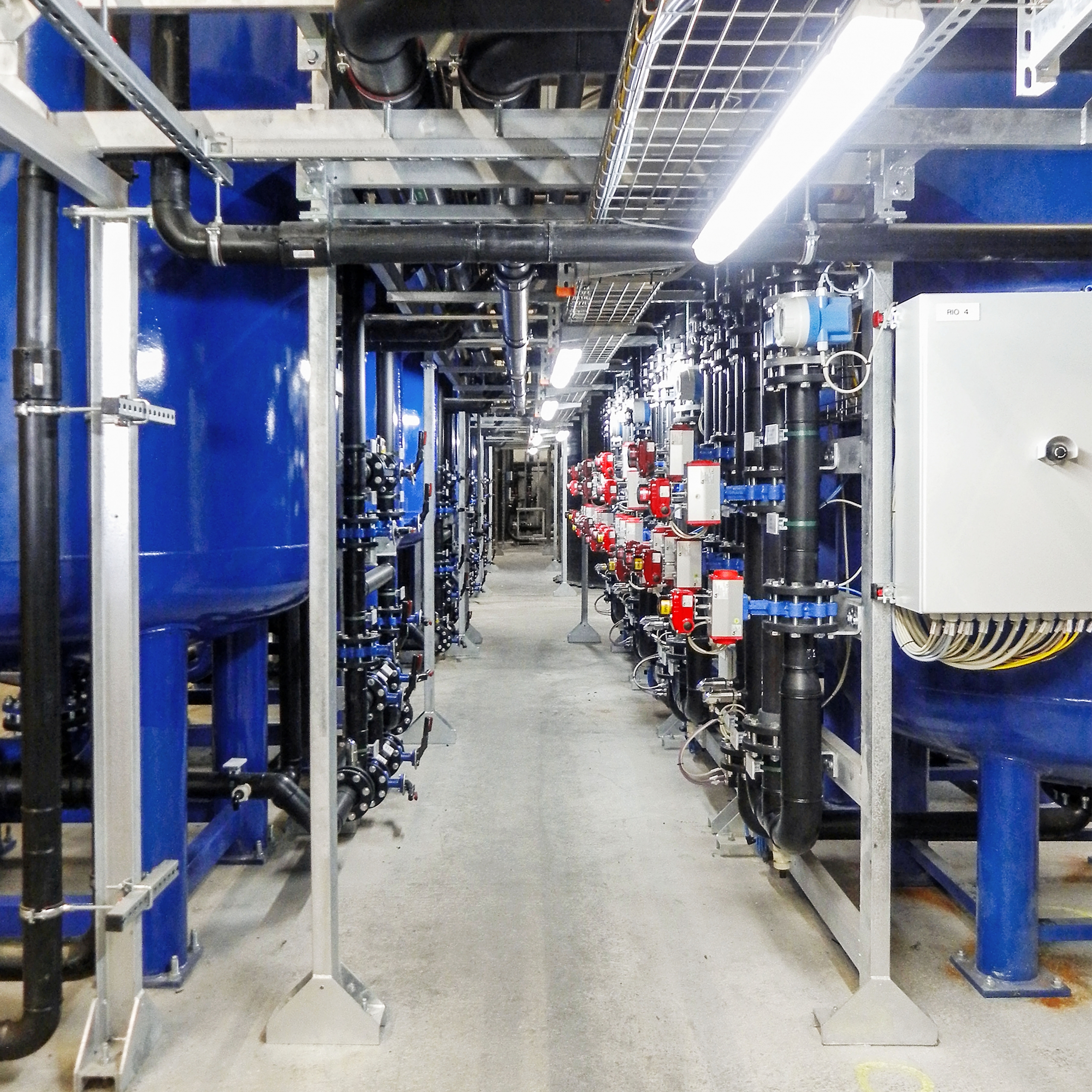
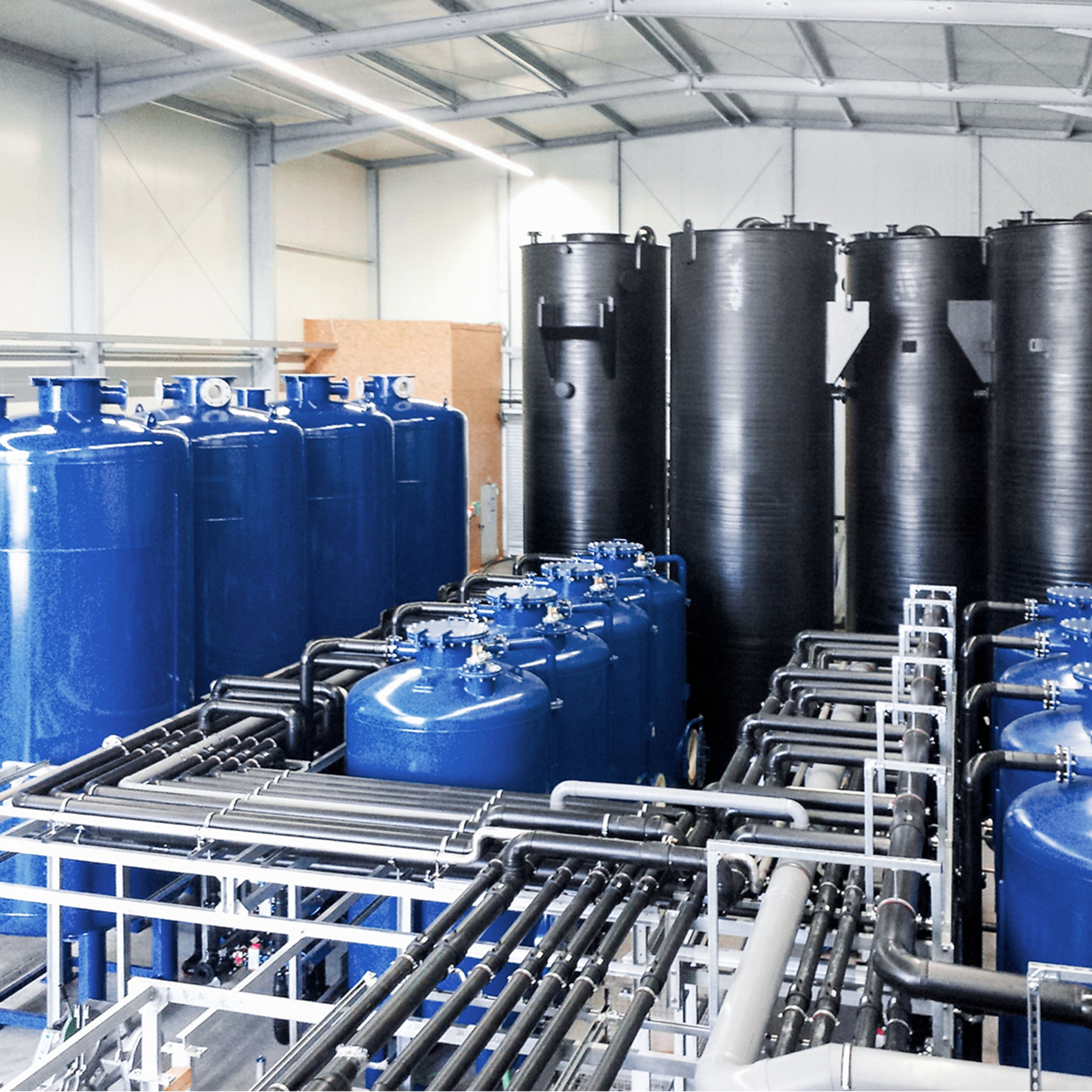
Your contact person for all questions on wastewater treatment
